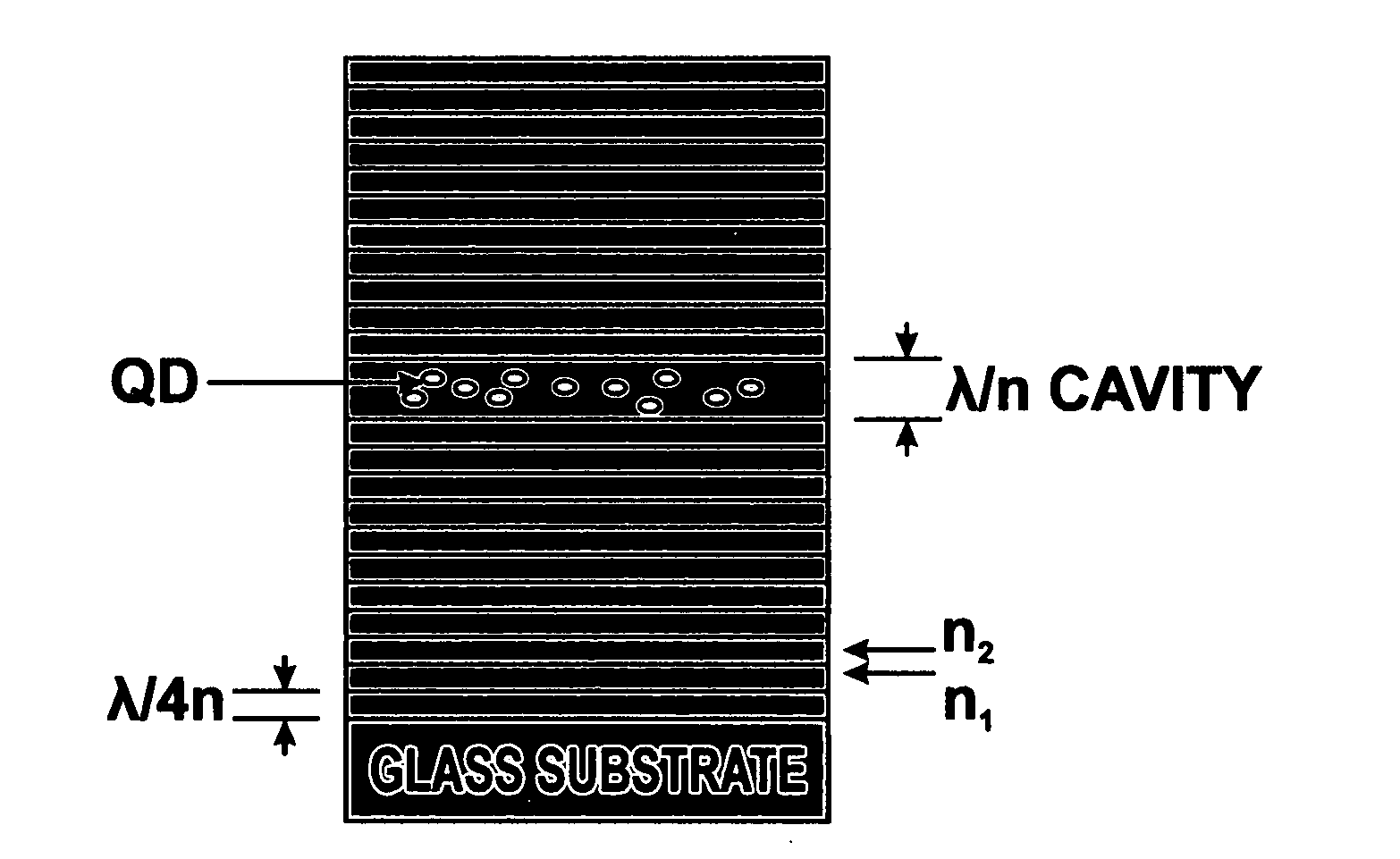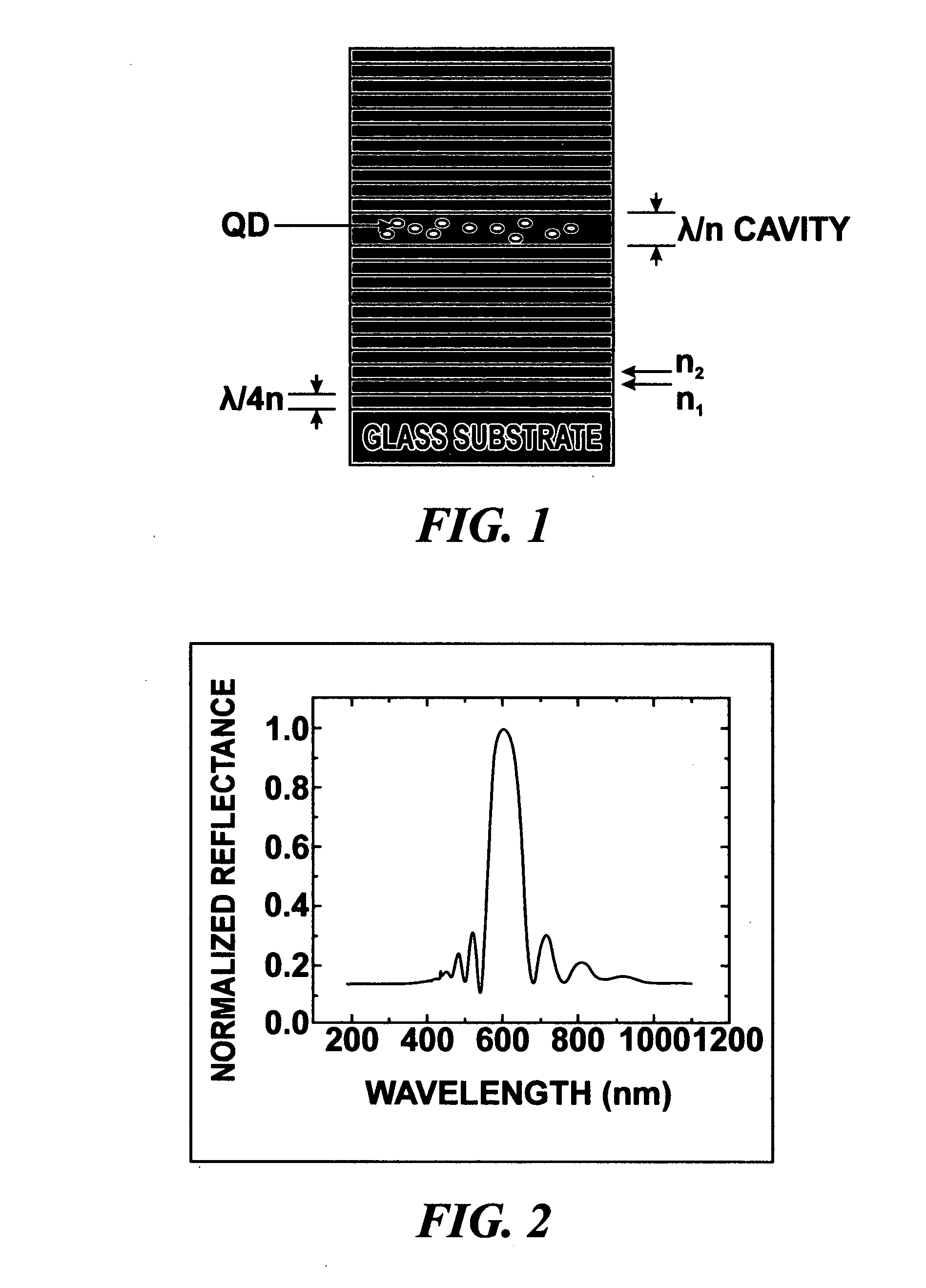Spin-coated polymer microcavity for light emitters and lasers
a technology of spincoated polymer and light emitter, which is applied in the direction of laser details, optical resonator shape and construction, luminescent compositions, etc., can solve the problems of not being used to develop surface emitters, many layers of high reflectivity, and poor control of periodic structure, so as to achieve low refractive index, poor periodic structure control, and high reflectivity of dbr mirrors
- Summary
- Abstract
- Description
- Claims
- Application Information
AI Technical Summary
Benefits of technology
Problems solved by technology
Method used
Image
Examples
Embodiment Construction
Methodology
[0023]The one dimensional polymer microcavity structure was fabricated by spin coating polymers of different refractive indices on a glass substrate. The microcavity structure comprises a cavity sandwiched between two Distributed Bragg reflectors (DBRs) as shown in FIG. 1, which is a diagrammatic cross sectional view of the microcavity structure of the embodiments of the present invention. Alternating layers of polymers of two different refractive indices were stacked to form the DBRs. The bottom and top DBRs comprise ten and five periods, respectively.
[0024]To achieve high reflectivity, the polymers for the DBR structures were chosen so that they have a relatively high refractive index ratio. The high and low refractive index polymers chosen were poly-N(vinylcarbazole) (PVK) and poly(acrylic acid) (PAA), with refractive indices of 1.683 and 1.420 at 600 nm, respectively. Another important criterion for choosing these polymers was that the solvent of one polymer does not ...
PUM
 Login to View More
Login to View More Abstract
Description
Claims
Application Information
 Login to View More
Login to View More - R&D
- Intellectual Property
- Life Sciences
- Materials
- Tech Scout
- Unparalleled Data Quality
- Higher Quality Content
- 60% Fewer Hallucinations
Browse by: Latest US Patents, China's latest patents, Technical Efficacy Thesaurus, Application Domain, Technology Topic, Popular Technical Reports.
© 2025 PatSnap. All rights reserved.Legal|Privacy policy|Modern Slavery Act Transparency Statement|Sitemap|About US| Contact US: help@patsnap.com



